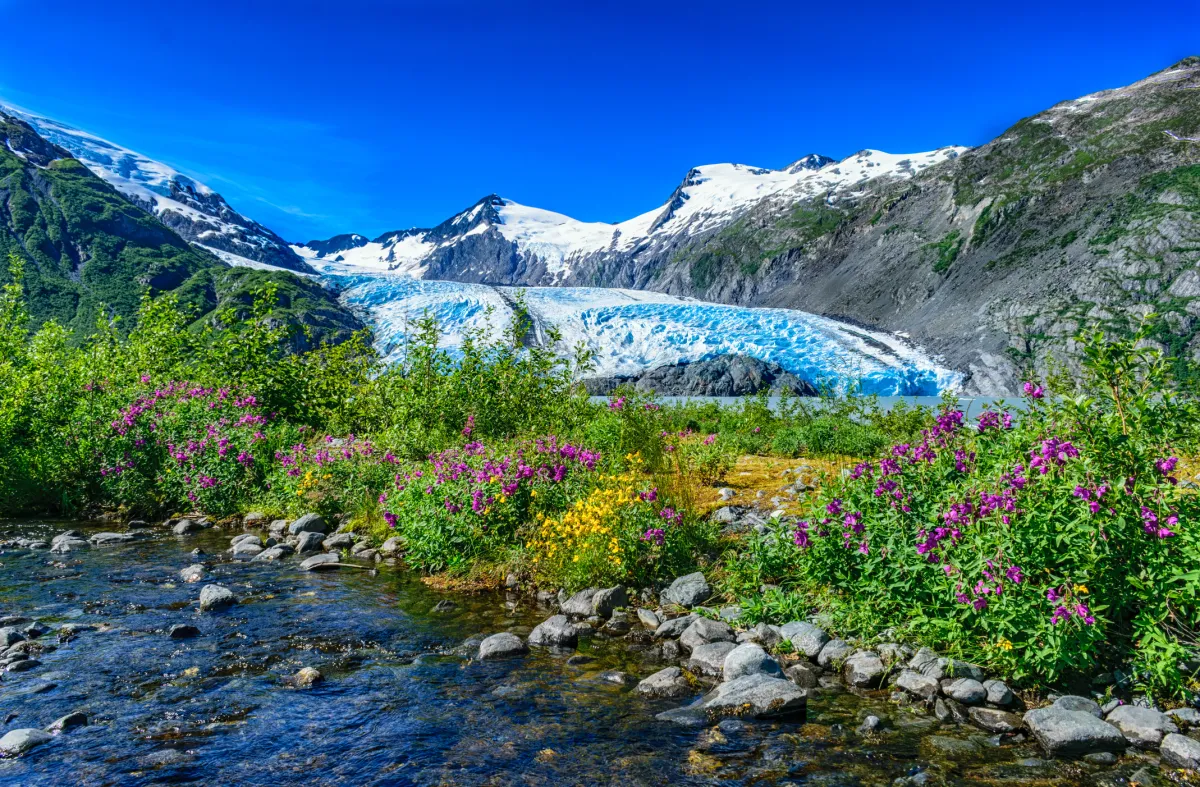
When it comes to the warmest month in Alaska, July takes the crown.
Known for its long days, mild temperatures, and pleasant weather conditions, July is the prime time to experience the warmer side of the Last Frontier. Throughout the state, from coastal areas to inland regions, July brings about comfortable temperatures that make exploring Alaska a delightful experience.
In July, Alaska experiences its peak summer season, characterized by longer daylight hours and milder climates. The average temperatures during this month range from the mid-60s to the low 70s Fahrenheit (18-23 degrees Celsius) in many parts of the state. However, it's essential to note that Alaska's weather can vary significantly across its vast expanse, and factors such as proximity to the coast, elevation, and regional climate patterns can influence local temperatures.
Coastal regions, such as Juneau, Anchorage, and Ketchikan, benefit from the moderating effects of the ocean, resulting in more stable and relatively warmer temperatures. In these areas, July temperatures typically hover around the mid to high 60s Fahrenheit (18-20 degrees Celsius), providing a pleasant environment for outdoor activities and sightseeing.
Inland areas, including Fairbanks and Denali National Park, tend to experience slightly warmer temperatures compared to the coast due to the continental climate. During July, these regions can see average temperatures reaching the high 60s to low 70s Fahrenheit (20-22 degrees Celsius), creating a favorable environment for exploring the stunning landscapes, hiking, and wildlife spotting.
One of the remarkable aspects of July in Alaska is the extended daylight hours. In the northernmost parts of the state, such as Barrow and Nome, the sun doesn't set for weeks during this time, leading to the famous phenomenon known as the "Midnight Sun." Even in southern regions, like Anchorage and Juneau, visitors can expect up to 18-19 hours of daylight, providing ample time to engage in outdoor activities and make the most of their Alaskan adventure.
The warmer temperatures and extended daylight hours in July make it an ideal month for various outdoor pursuits in Alaska. Whether you're interested in hiking, fishing, kayaking, wildlife viewing, or even taking a scenic cruise, July offers favorable conditions to enjoy these activities to the fullest. It's a prime time to witness Alaska's abundant wildlife, including bears, moose, eagles, and whales, as they are actively feeding and taking advantage of the extended daylight hours.
Moreover, the pleasant weather conditions and longer days also contribute to the accessibility of Alaska's stunning natural attractions. Glacier viewing, for instance, becomes more enjoyable as the warmer temperatures allow for smoother sailing, and the extended daylight hours provide ample time to witness the grandeur of these icy wonders.
What are the summer months in Alaska?
Summer in Alaska runs between May and September, although some of these months aren't nearly as warm as others. Summer is the most popular time to visit Alaska because of the comfortable outdoor conditions.
You'll generally find warming temperatures first in the southeast part of the state, as increased daylight coincides with warmer outdoor temperatures.
The months of June, July and August represent the core of Alaska's summer, especially in the northern parts of the state.
June marks the beginning of summer in Alaska. Average temperatures during June range from the high 50s to low 70s Fahrenheit (around 14-23 degrees Celsius), providing comfortable conditions for outdoor activities. June also offers excellent opportunities for fishing, as various salmon species make their way upstream.
July is widely regarded as the peak of Alaska's summer season. With warmer temperatures ranging from the mid-60s to low 70s Fahrenheit (18-23 degrees Celsius), July presents ideal weather conditions for exploring Alaska's landscapes and outdoor pursuits. Visitors can enjoy extended daylight hours, with some areas experiencing the Midnight Sun phenomenon, where the sun doesn't set for weeks. July is an excellent time for wildlife viewing, glacier cruises, hiking, and taking part in cultural events and festivals held throughout the state.
August brings a mix of late-season warmth and the beginnings of the transition into autumn. Average temperatures range from the high 50s to mid-60s Fahrenheit (around 14-18 degrees Celsius), offering comfortable weather for outdoor activities.
August is an ideal time for berry picking, as the wild blueberries and salmonberries are in full abundance.
One important thing to note about Alaska's summer months is the prevalence of mosquitoes and other biting insects. While the mosquito population varies across the state and is influenced by factors such as location and weather conditions, it's advisable to come prepared with insect repellent and protective clothing to mitigate any inconveniences.

